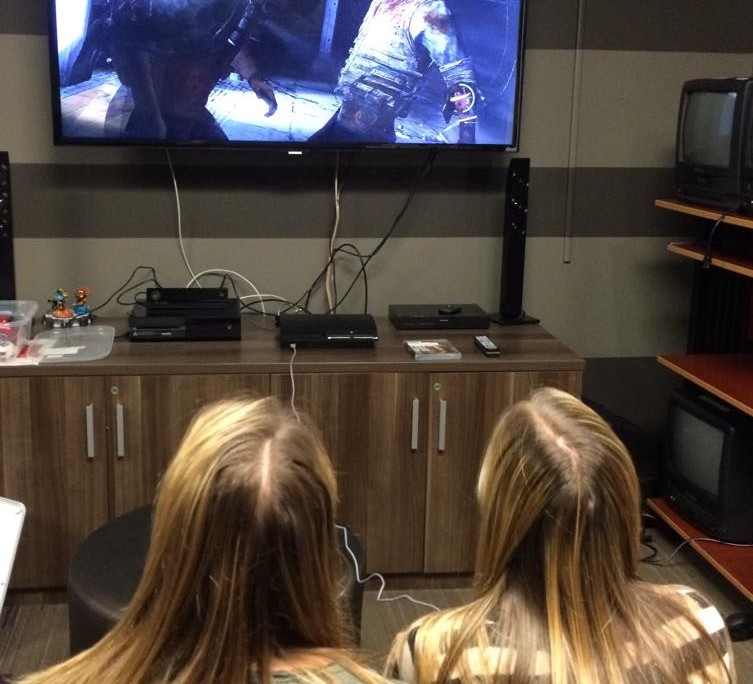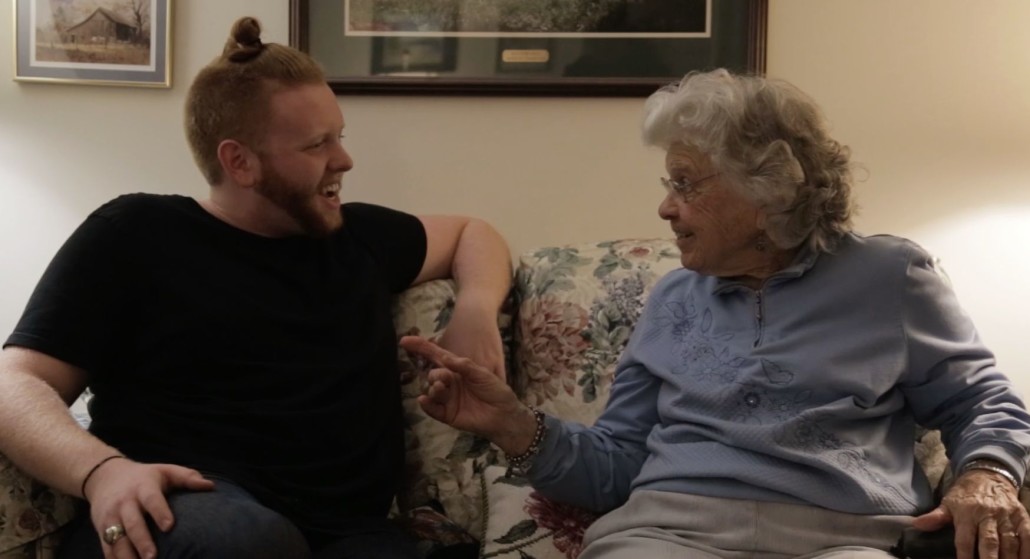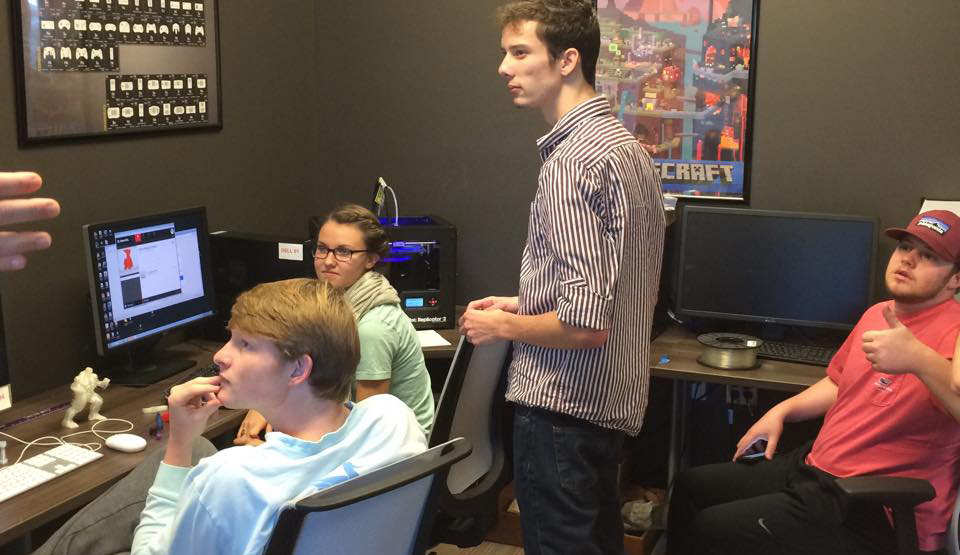
Share This Article!
Related Articles
Technology in the Classroom
By: Allison Daniel
In a world with rapidly developing technology, children are continually exposed to media at younger ages, and technology is becoming a centerpiece in everyday life. This includes its place in education as well. From researching topics for papers to using technology to reinforce lessons, computers and other forms of technology have a large role in today’s classrooms.
Students in Dani Herro’s Digital Media in Learning (EDF 4800) course learned how to incorporate technology into a classroom setting from the educator perspective. This course consisted of short mini-lectures, hands-on experience working with digital media tools, numerous opportunities to collaborate with peers to solve problems, and unique service-learning opportunities. In this manner, undergraduate student teams learned how to consider technology for learning and created lesson plans and projects that incorporated technology. The students were then given the opportunity to teach these lessons in actual elementary and high school classrooms in the Clemson area.
Undergraduate student teams learned how to consider technology for learning and created lesson plans and projects that incorporated technology.
Sarah Keistler and Abby Houston, a math education major and Spanish major respectively, used iPads and apps to help elementary school students in Greenville learn fractions in Spanish. The elementary students in this class already had a strong background in Spanish although they were native English speakers. The app that Keistler and Houston used, BrainingCamp Fractions, walked the students through an entire lesson of learning fractions in an interactive fashion that allowed them to understand the math aspect first. Then, the Spanish elements were introduced by having students partner up and explain to one another how to work the problem using Spanish vocabulary. “This allows students to see that math is the same in every language and is pretty much universal,” Abby said.
.

Utilizing new technologies in the math classroom allowed students to interact with the problems and to get a visual representation of how fractions work in a way that they might not in a traditional lesson. Another app, Splash Math 5th Grade, was even more appealing to the students because it is set up in the form of a game that allows them to earn badges as they advance. Keistler had actually already used both apps previously when she tutored at a center in her hometown of Clover, and she felt the students really benefited from the technology.
Another pair of Clemson students, Chloe Jones and Caroline Leck, both education majors, created a project that gave students a chance to work with technology and apply it to a real-life project. The project’s focus was to have fourth to sixth grade students digitally create a sustainable habitat for a frog. The project had several different aspects to keep the students engaged and incorporated different elements to help them grow and learn. The technology aspect came in when the students were asked to research the types of environments frogs can live in and to learn how to build a stable ecosystem for their frog. Students were even able to learn all the elements that make up a happy habitat by using an app to learn what types of animals live in different environments. The project also incorporated an artistic side that allowed the students to draw and design their ecosystem before actually building it. The students had a chance to visit local nurseries and talk to the staff to learn more about what types of plants they needed to include in their ecosystems. Jones was pleased that this project represented the Science Technology Engineering Arts and Mathematics (STEAM) initiative by including all of those elements instead of just one. Jones said this is an important aspect of education today “because these fields are intertwined in the real world.”
Utilizing new technologies in the math classroom allowed students to interact with the problems and to get a visual representation of how fractions work in a way that they might not in a traditional lesson
While Digital Media in Learning is an education class, it is open to non-education majors as well. According to Jones, the lessons learned in this class were useful to a lot of different majors.
With technology becoming more of a fixture in everyday life, it is important for the classroom to keep up. The Clemson University students participating in service-learning during Dani Herro’s digital media course learned how to adapt to this changing environment and how to use technology to their advantage in their future classroom or workplace.

Written By: Allison Daniel
Allison Daniel is a junior English major who grew up in Dillon, South Carolina, a small town located in the northeast of the state. Aside from interning at the Pearce Center, She is the Sports Editor of The Tiger and is a Writing Fellow at the Clemson University Writing Center.




